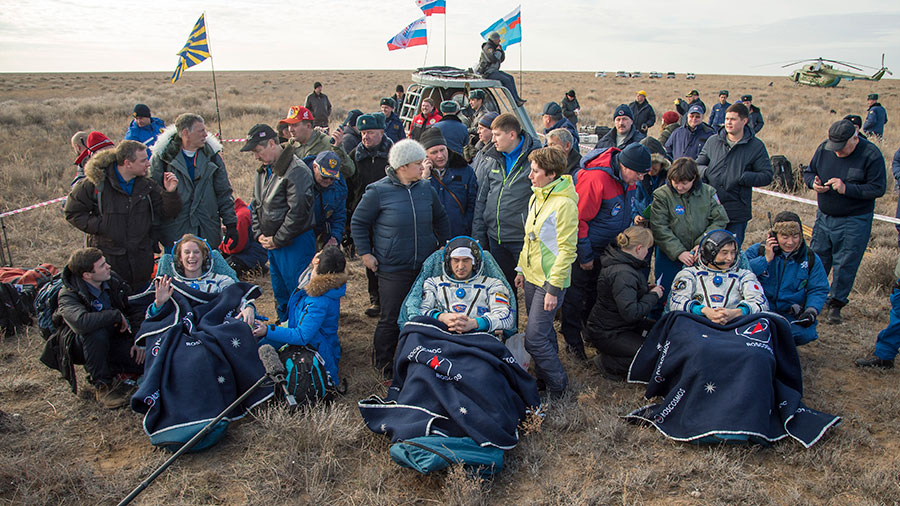
NASA astronaut Kate Rubins of NASA, Anatoly Ivanishin of Roscosmos and Takuya Onishi of the Japan Aerospace Exploration Agency safely landed their Soyuz MS-01 spacecraft in Kazakhstan southeast of the remote town of Dzhezkazgan at 11:58 p.m. EDT on Saturday, Oct. 29. Russian recovery teams are helping the crew exit the Soyuz spacecraft and adjust to gravity after their stay in space. The trio will be transported by helicopter to Karaganda, Kazakhstan where they will split up, with Rubins and Onishi returning to Houston in a NASA jet, while Ivanishin will be flown back to his training base at Star City, Russia.
During her time on the orbiting complex, Rubins ventured outside the confines of the station for two spacewalks. During the first one Aug. 19, she and NASA astronaut Jeff Williams installed the first international docking adapter. Outfitted with a host of sensors and systems, the adapter’s main purpose is to provide a port for commercial spacecraft to bring astronauts to the station in the future. Its first users are expected to be the Boeing Starliner and SpaceX Crew Dragon spacecraft now in development in partnership with NASA’s Commercial Crew Program. During her second spacewalk Sept. 1, Rubins and Williams retracted a spare thermal control radiator and installed two new high-definition cameras.
Together, the Expedition 49 crew members contributed to hundreds of experiments in biology, biotechnology, physical science and Earth science aboard the world-class orbiting laboratory during their 115 days in space.
The trio also welcomed three cargo spacecraft delivering several tons of supplies and research experiments. Rubins was involved in the grapple of Orbital ATK’s Cygnus spacecraft to the station in October, the company’s sixth contracted commercial resupply mission, and SpaceX’s Dragon ninth contracted mission in July. One Russian ISS Progress cargo spacecraft also docked to the station in July.
Rubins and Onishi spent a total of 115 days in space during their first mission. Ivanishin now has 280 days in space during two flights.
Expedition 50, with Shane Kimbrough of NASA in command and his crewmates Sergey Ryzhikov and Andrey Borisenko of Roscosmos, will operate the station for three weeks until the arrival of three new crew members.
Peggy Whitson of NASA, Thomas Pesquet of ESA (European Space Agency) and Oleg Novitskiy of Roscosmos are scheduled to launch Nov. 17 from Baikonur, Kazakhstan.
To learn more about the International Space Station, visit: https://www.nasa.gov/station. For launch coverage and more information about the mission, visit: https://blogs.nasa.gov/spacestation/. Get breaking news, images and features from the station on Instagram at: http://instagram.com/iss and on Twitter @Space_Station.
